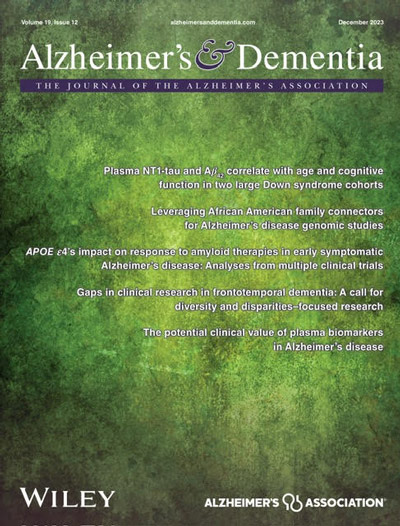Multimodal prognostic modeling of individual cognitive trajectories to enhance trial efficiency in preclinical Alzheimer's disease
Abstract
INTRODUCTION
Cognitive decline in asymptomatic preclinical Alzheimer's disease (AD) is slow and variable, limiting detection of treatment effects. This study developed models to forecast trajectories and improve trial efficiency.
METHODS
Models were trained on longitudinal Preclinical Alzheimer's Cognitive Composite (PACC) data up to 240 weeks from the Phase III A4 study of solanezumab. Baseline inputs included demographics, apolipoprotein E (APOE) ε4, clinical scores, amyloid positron emission tomography (PET), plasma pTau217, magnetic resonance imaging (MRI), and tau PET (sub-study). Stochastic gradient boosting was used, with evaluation via cross-validation and trial simulations.
RESULTS
The best model without tau PET used pTau217, clinical, and MRI data (R2 = 0.32; area under the receiver operating characteristic curve (AUROC) for classifying a 0.5-point PACC decline = 78.6%). Replacing MRI with tau PET improved performance (R2 = 0.42; AUROC = 83.1%). Predicted trajectories as a prognostic covariate reduced sample sizes by 35% and increased power from 80% to 94.7%.
DISCUSSION
Prognostic models can predict decline in preclinical AD and improve trial efficiency.
CLINICALTRIALS.GOV IDENTIFIERS
NCT02008357 (Clinical Trial of Solanezumab for Older Individuals Who May be at Risk for Memory Loss (A4))
Highlights
- Models forecast 4.5-year cognitive decline in amyloid-positive preclinical Alzheimer's disease (AD).
- Plasma pTau217 and tau positron emission tomography (PET) standardized uptake value ratios (SUVRs) in early-accumulating regions are key predictors.
- Tau PET improves prediction beyond plasma, magnetic resonance imaging (MRI), and clinical measures.
- Forecasted decline as a prognostic covariate improves power and cuts sample size in trial simulations.
- Alternative models underperform yet retain practical utility when tau PET or pTau217 is unavailable.



 求助内容:
求助内容: 应助结果提醒方式:
应助结果提醒方式:


